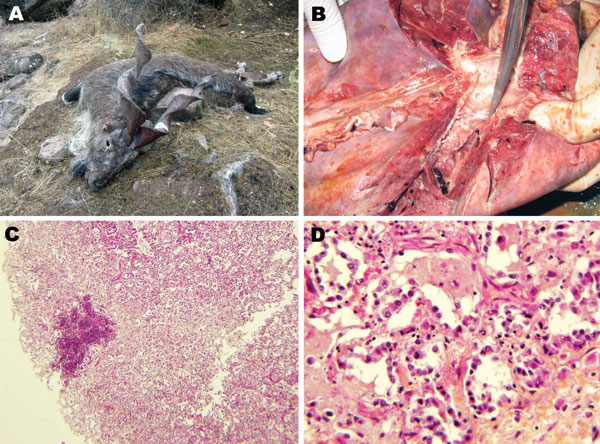Volume 17, Number 12—December 2011
Dispatch
Fatal Outbreak of Mycoplasma capricolum Pneumonia in Endangered Markhors
Figure 1

Figure 1. Pneumonia caused by Mycoplasma capricolum subsp. capricolum in markhors (Capra falconeri), Tajikistan, 2010. A) Adult male markhor found dead with signs of pneumonia and no indications of emaciation. B) Disseminated gray areas of consolidation in the cardiac lobe of the right lung with mucopurulent exudate in bronchi. C) Diffuse proliferative interstitial pneumonia associated with a lesion of suppuration (hematoxylin and eosin stain; original magnification ×40). D) Interstitial pneumonia showing fibrotic thickening of alveolar walls and epithelialization of pneumocytes (hematoxylin and eosin stain; original magnification ×250).
Page created: November 22, 2011
Page updated: November 22, 2011
Page reviewed: November 22, 2011
The conclusions, findings, and opinions expressed by authors contributing to this journal do not necessarily reflect the official position of the U.S. Department of Health and Human Services, the Public Health Service, the Centers for Disease Control and Prevention, or the authors' affiliated institutions. Use of trade names is for identification only and does not imply endorsement by any of the groups named above.